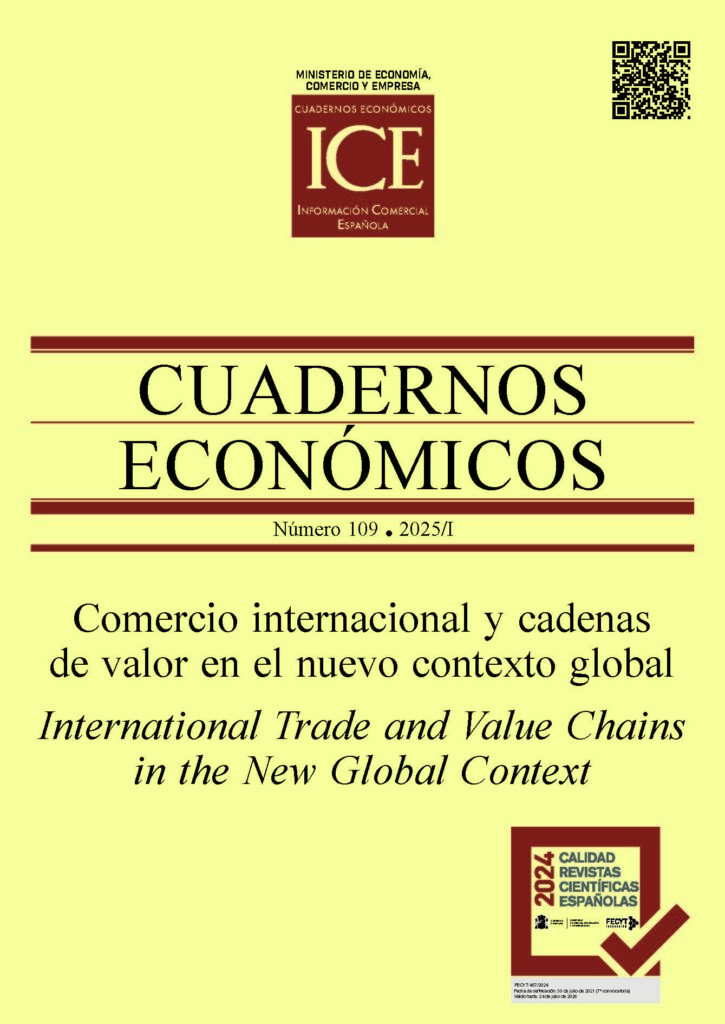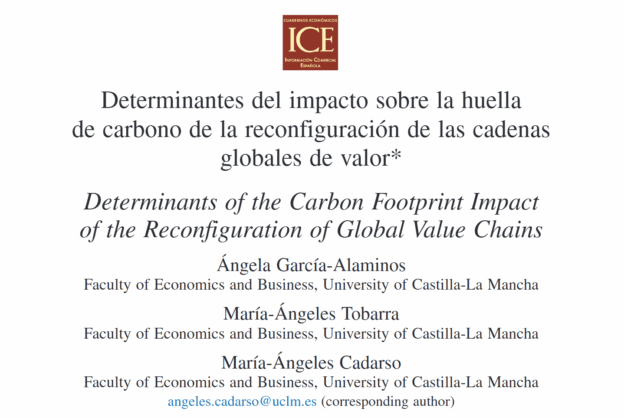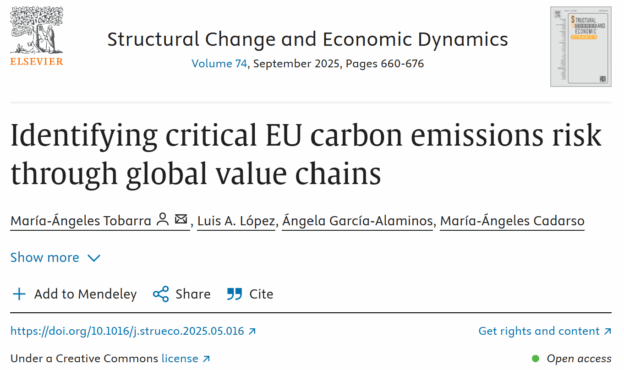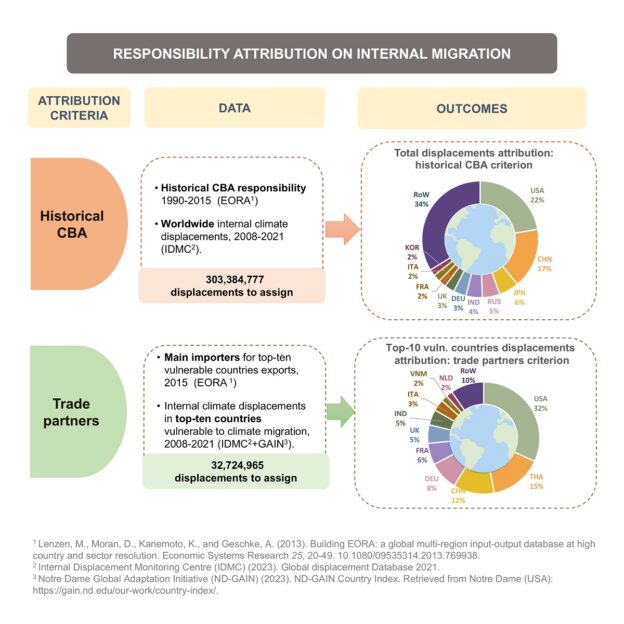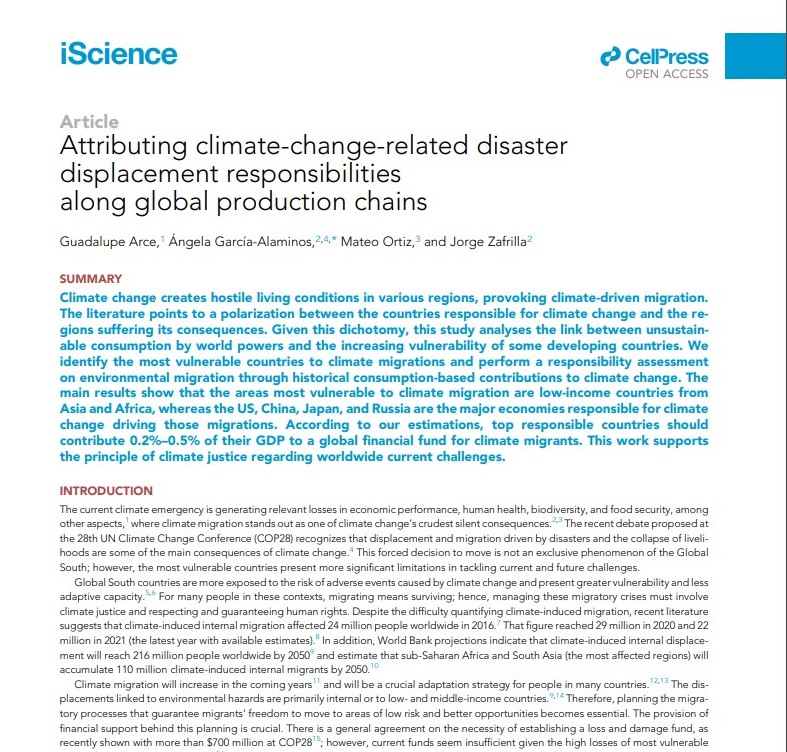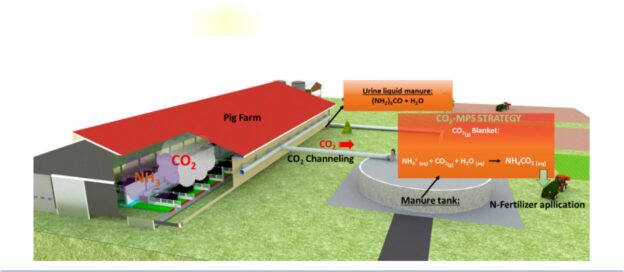The GEAR members Ángela García-Alaminos, María Ángeles Tobarra, and María Ángeles Cadarso have recently published the paper “Drivers of the Carbon Footprint Impact Resulting from the Reconfiguration of Global Value Chains» in the most recent issue of the Spanish journal Cuadernos Económicos de ICE, entitled “International trade and global value chains in a new global context. The article is a result of the European Commission under Horizon Europe project TWIN SEEDS (Towards a World Integrated and Socio-economically Balanced European Economic Development Scenario), grant number 101056793 (https://doi. org/10.3030/101056793) and has also received funding from the University of Castilla-La Mancha and the EU Regional Development Fund trough the project SOS-ESOCAM (ref. 2022-GRIN-34177).
This study aims to assess whether the evolution of the global value chains (GVCs) in which the Spanish economy is embedded has contributed to emission reduction goals or not. To this end, we analyze the evolution of Spain’s carbon emissions from multiple perspectives between 1995 and 2018, and evaluate their determinants through a structural decomposition analysis using an extended multi-regional input-output model. We pay particular attention to the impact of GVC reconfiguration, which has shifted from greater fragmentation and offshoring of production to a slowdown in globalization and even reshoring of activities. Our results show that the geographical factor of these GVCs has contributed to increasing emissions throughout the entire period, while other factors (emission intensity, demand level and pattern) have helped reduce them since 2008.
You can find the full text here: https://doi.org/10.32796/cice.2025.109.7925
